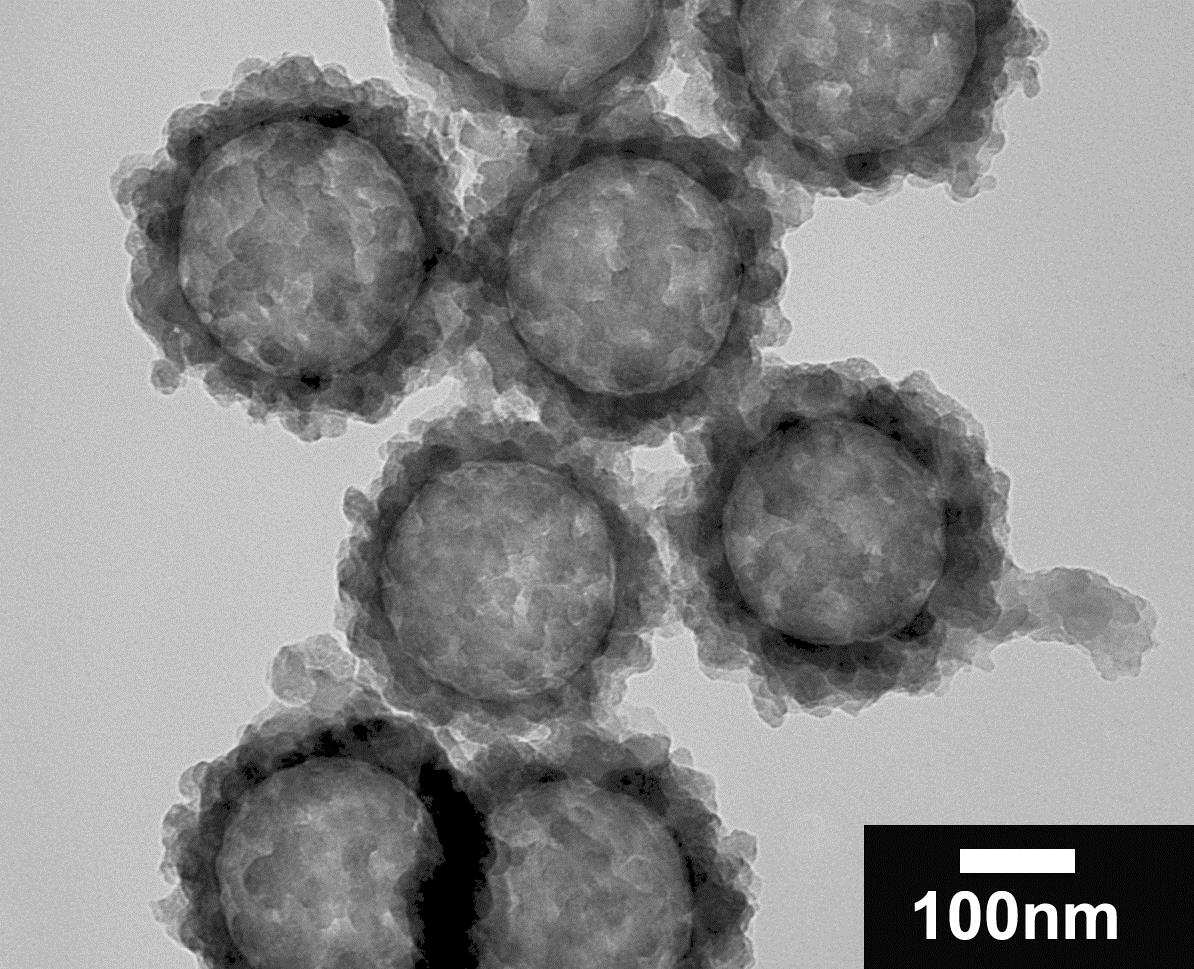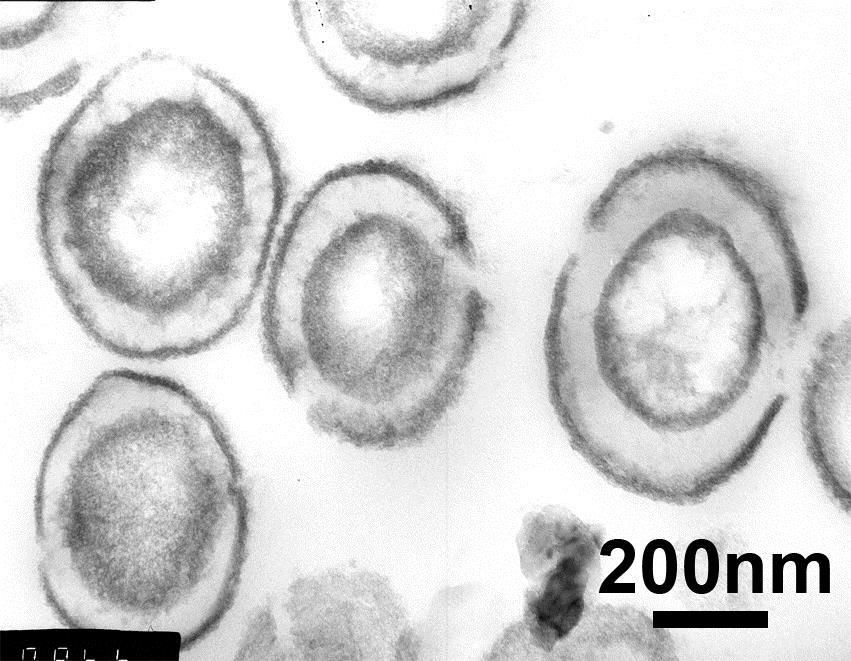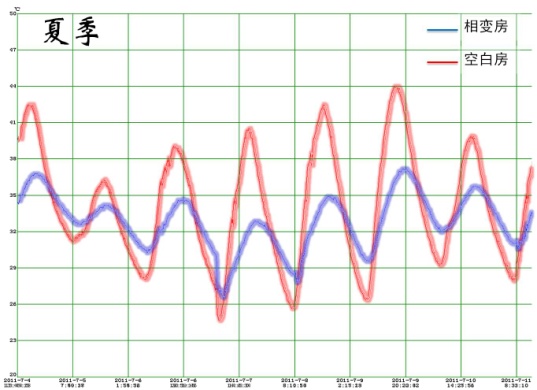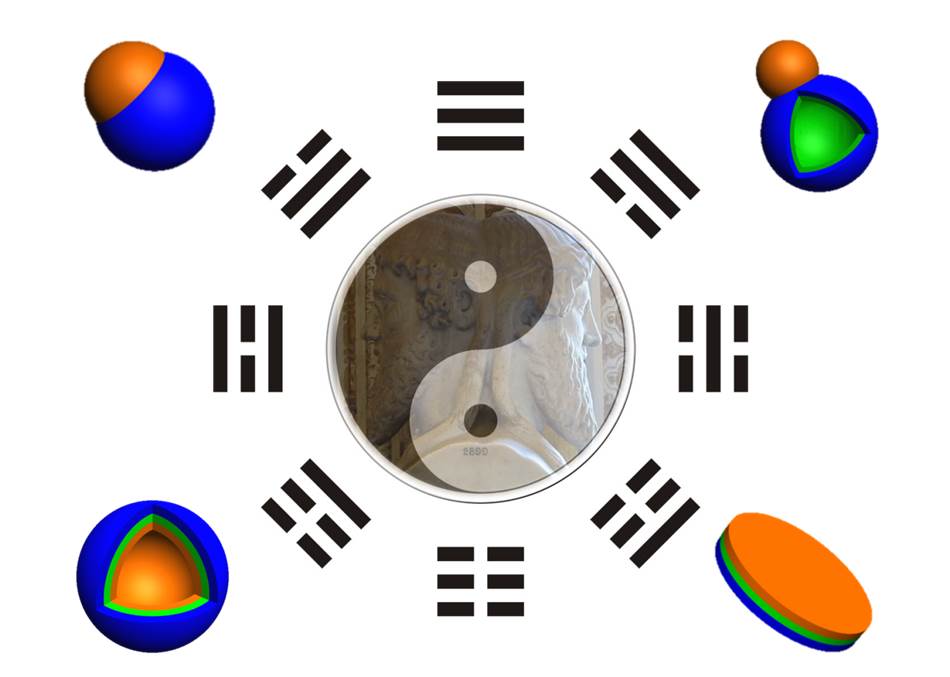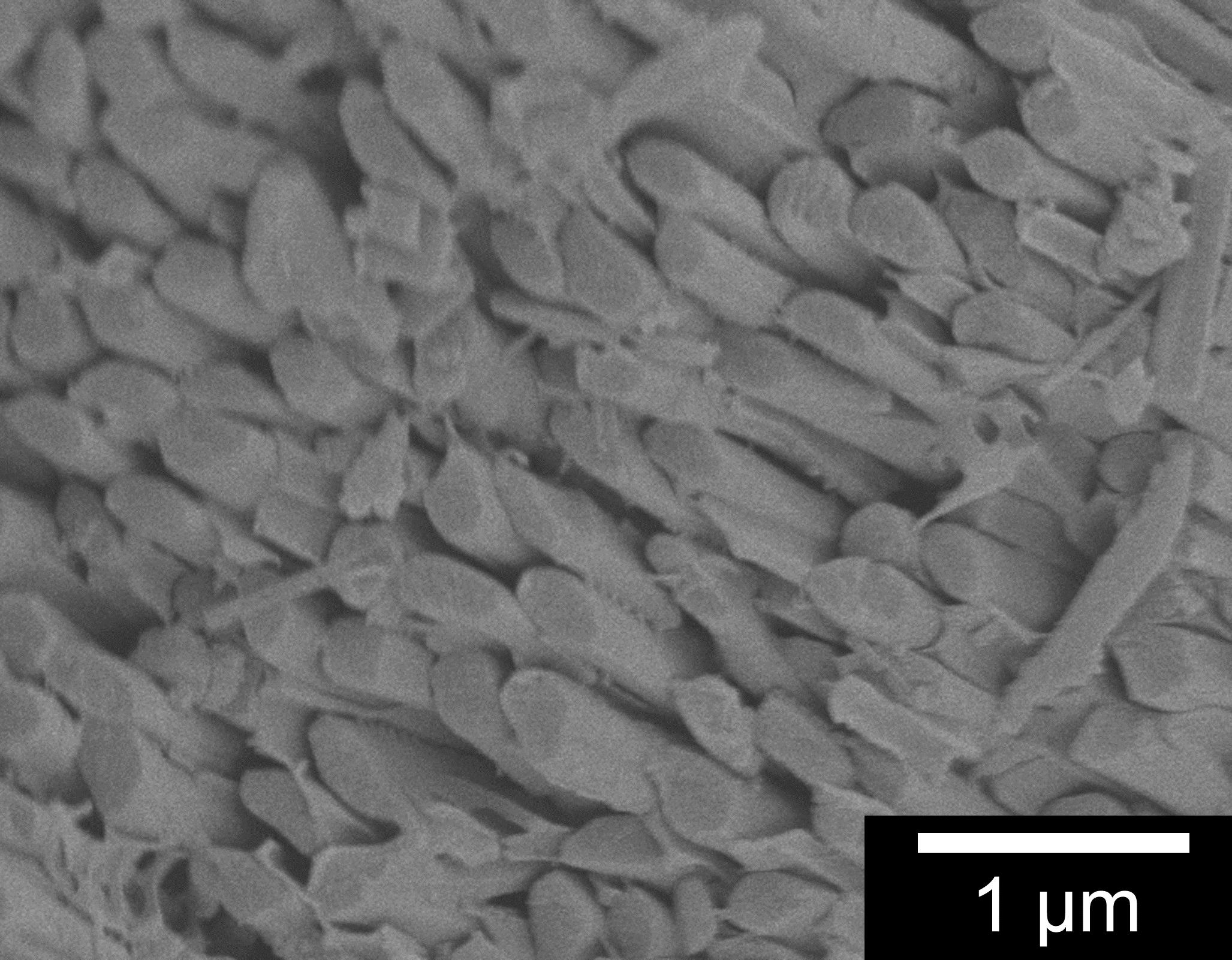 Research Interests
Research Interests
Research Area
Design and Synthesis of Functional Polymer Composite Materials and Understanding Their Physical and Chemical Properties
Design and synthesis of multiscale and multifunctional polymer composite is a crucial field of polymer sciences. Materials properties such as high-performance and versatility depend on that. We develop fabrication methods to control the morphology, spatial arrangement and multi-scale microstructures of the materials, in order to achieve high-performance and responsiveness of our products. Since the year of 2000, our research have focused on composite particles with complicated structures and composite membranes with nano-sized pores. We developed template-assisted fabrication and micro-processing methods to control the geometry of the materials; through the special interactions between soft matters (polymer gels and block copolymers) and other substances, we tuned their growing process as well as multi-compositional and multi-scale spatial arrangement; also, systematically, we studied the fundamental physical and chemical issues related to these materials. Recently, we have been focused on developing synthetic methods for functional Janus materials and using them for interface manipulation. Such research will provide innovative strategies to solve the problems existing in materials development, energy & environment, and biomedical applications. More details are listed as following:
1. Composite polymeric hollow spheres
Composite polymeric hollow spheres are a typical class of functional polymer composites. They serve important roles in the field of novel materials, energy, catalyst and bio-mimicking applications. Our research include systematically studying the principles of how to tune the spatial distribution of compositional moieties and the microstructures. We are the first to introduce the method of preparing hollow micro-spheres by using a functional spherical composite polymer gels template, and also elaborated the physical and chemical mechanisms of such process. We proposed a unique strategy based on the permeability and tunable functionalities of polymeric gels. The core/shell polymeric gel microspheres were used as template, then these polymeric gels can induce favorable growth of functional substances in desired sites by specific interactions.. This strategy successfully resolve the problem of continually adjusting the size and shell thickness of the hollow spheres. Our studies also revealed the physical and chemical mechanism (catalysis, electrostatic effect and ion-exchange) of such favored growth. This method had become one of the most widely used to prepare composite polymeric hollow micro-spheres. For instance, we developed a simple technique to construct nanometer channels by electric field induced structural shift and fast solidification via sol-gel process (Figure 1). Another example is by controlling the spatial distribution of functional spots of the gels, so that the functional spots of polymeric composite hollow microspheres and their microstructures (such as single/multi layers or surface bumpiness) can be arranged. Thus compartmentalizationof composition and functionalities of these hollow spheres were achieved (Figure 2). We will further improve universal preparation techniques for polymeric gel-penetrated mesostructured hollow microspheres, based on the strategy of induced favorable growth. More other hollow structures as well as inorganic species (metal, metal oxides and carbon) composited materials will be developed. We have been invited to publish a review article on Advanced Materials (2008, 20, 2965–2969.).
a) 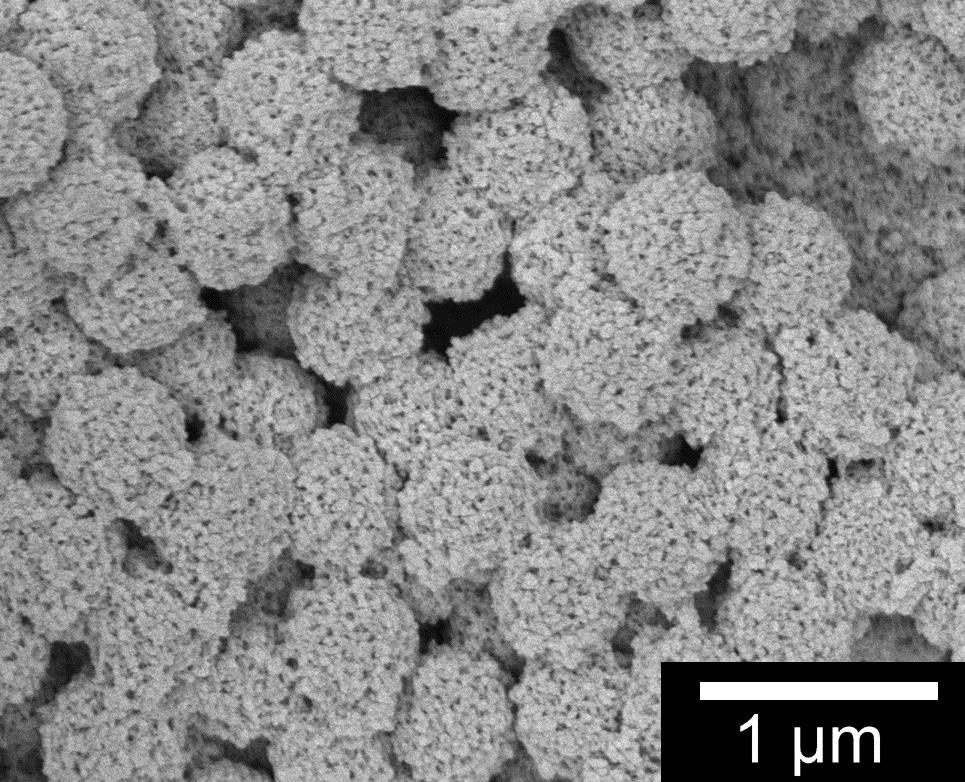
Figure 1. a) TiO2/Sulfonated polystyrene hollow porous microspheres; b) Polyaniline/SiO2 composite hollow microspheres.
a) 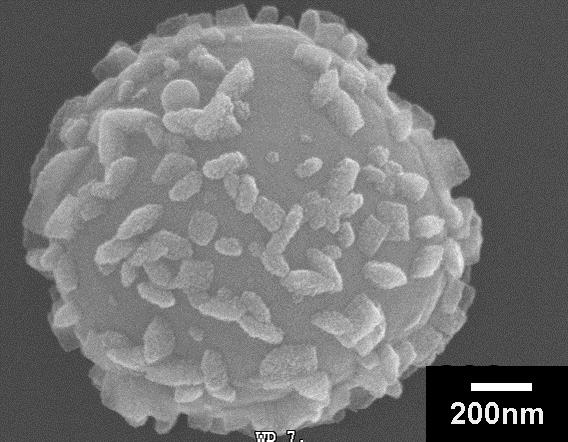
Figure 2. a) TiO2/polystyrene hollow spheres with pillars protruding out of the surface;b) Ultra-microtomed double-shelled titania hollow spheres.
2. Functional Microcapsules:
Fundamental research is the driving force for applied technologies. By applying the strategy of polymer induced favorable growth, we invented a high-efficient technique to encapsulate substance to prepare functional microcapsules, including phase-transfer heat-buffer and fire-proof capsules. The phase-transfer heat-buffer capsules are environmental friendly, and possess several advantages such as high enthalpy capacity, adjustable shell thermo-conductivity, and excellent cycling stability. They are easy to produce at low cost and we have already achieved large-scale industrialization. By cooperation with Beijing New Building Material (Group) Co., Ltd. we are able to incorporate these capsules into wall board they produce. The exhibition house built with these wall board (Figure 3a) showed outstanding energy-saving feature. The temperature data recorded inside these houses indicate that these wall board have significantly decreased daily temperature fluctuation and reduced heating/cooling energy cost in all seasons (Figure 3b).The energy saving effect isstable throughout entire experimental period for over 5 years. Our product have been put into market and practically used in several office premises in Beijing.
Other than energy conservative materials, we have also developed encapsulation technique for fire-proof reagents. The stability of the interface between the capsules and matrix was greatly improved by our methods. These fire-proof capsules are easy to use and flexible. They provide a solution for fire-proof materials under a variety of different circumstances (Figure 4).
a) 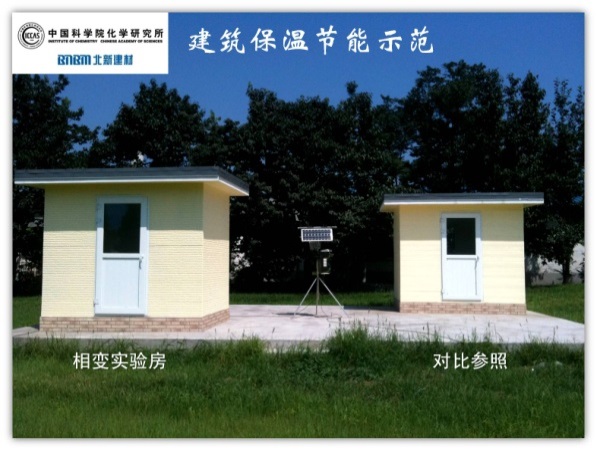
Figure 3. a) Example house built with wall board containing phase-transfer heat-buffer capsules (left), and control house built with regular wallboard (right); b) Temperature fluctuation curves(in summer) of the house built with heat-buffer capsules (blue), and control house built with regular wallboard (red).
Figure 4. Comparison of results after burning test: Regular foam plastic (left) , and foam plastic with same composition but integrated with fire-proof capsules (right)。
3. Janus composite system and interface manipulation
Janus objects have two separated compositions integrated onto the same surface, they are the typical example as compartmentalized functional materials. Our research focus on the synthetic methods of Janus particles, in order to control their composition, size and geometry. We also systematically study their physical/chemical properties and interface manipulation behaviors. Some products have already been put into large-scale production, thus their practical applications are possible (Figure 5). We have developed a facile method to synthesis sub-micron sized Janus particles with two functionalities strictly compartmentalized. Based on phase separation induced by seeded emulsion polymerization, and also utilized the aforementioned methods to prepare functional spherical composite polymer gels, we were the first to prepare the Janus particles at large scale, and built a foundation for their practical applications. We also developed a facile and highly efficient method through materialization of the interface to prepare Janus hollow spheres and nanosheets, and provided a new solution for oil-water separation, catalysis and controlled drug release (Angew. Chem. Int. Ed. 2011, 50, 2379 –2382). The reviewer evaluated such method as “Facile and suitable for large scale preparation, it is a novel class of materials which had hardly been previously reported.”Such research also received highly positive appraisals from Nature China and APG Asia Materials as the research highlights. Furthermore, we selectively integrated functional materials onto the Janus nanosheets, and enabled them with specific capabilities such as magnetic, photonic, ionic, thermal and pH responsiveness. Laid down the ground for manipulating Janus particles with outer field and biological recognition.We were invited to publish a review article in Advance Materials (Adv. Mater. 2014, 26, 6944–6949). More recently, we focus on a novel class of functional organic/inorganic composite materials, which have colloidal sizes comparable with that of the polymer molecules. We have proposed the idea of Janus Colloidal Block Copolymer, so as to integrate together the amphiphilic/self-assemble properties of block copolymers and the functionalities of nanoparticles. We believe that such research will bring new opportunities within the fields of assembly structures, interface manipulation and medical diagnosis and treatment.
Figure 5. Composite Janus materials system.
4. Organic/inorganic ordered nanostructures and mesoporous composite membrane
We combined the advantages of the supramolecular structures of block copolymers and the inorganic sol-gel process, and prepared a series of organic/inorganic composite and mesoporous structured materials. Through selection of different precursors, we were able to control the composition of the framework of nanoporous materials and the chemical functionalities of the pore surface. We proposed an approach to grow one-dimensional (1D) mesostructured polymer/inorganic nanocomposite membrane within the confined cylinder channels of porous anodic aluminium oxide (AAO) membranes (Figure 6). This research resolved the challenge that the diameter and aspect ratio of macroscopic pores are difficult to manipulate. By simply changing the channel pore surface wettability of the AAO membrane, the macroscopic morphology can be controlled either in the form of fibers or tubes, which the traditional methods were incapable to provide. The reviewer noted it to be “a substantial novel method to produce mesostructured materials” and a “conceptually important ideology”. Professor C. J. Brinker (Member of the NAE) have commented in his review (Curr. Opin. Colloid Interface Sci.2006, 11, 126) that this work“first noted” the “effect of confinement in nodic alumina membranes on the alignment of surfactant/silica self-assembly”. One year later, Stucky and coworkers reported smaller supramolecular structure in tighter space using similar method (Nature Mater.2004, 3, 816). Shortly after that, Yamaguchi et al. proposed application of such porous membrane on nano-scale separation and purification (Nature Mater. 2004, 3, 337). The originality of our work was also acknowledged by Prof. Thomas Bein (Adv. Mater. 2011, 23, 2395). Our research is very helpful to help understand the self-assembly process in confined space at meso-scales, and provides a new approach to design micro- and nano- scale composite system. Based on the above method, we further prepared flexible and transparent polymer/inorganic mesoporous composite membrane, and built up the foundation for their large-scale applications. We have been invited to publish a review article in Chem. Commun. (Chem. Commun., 2009, 2270–2277).
a) 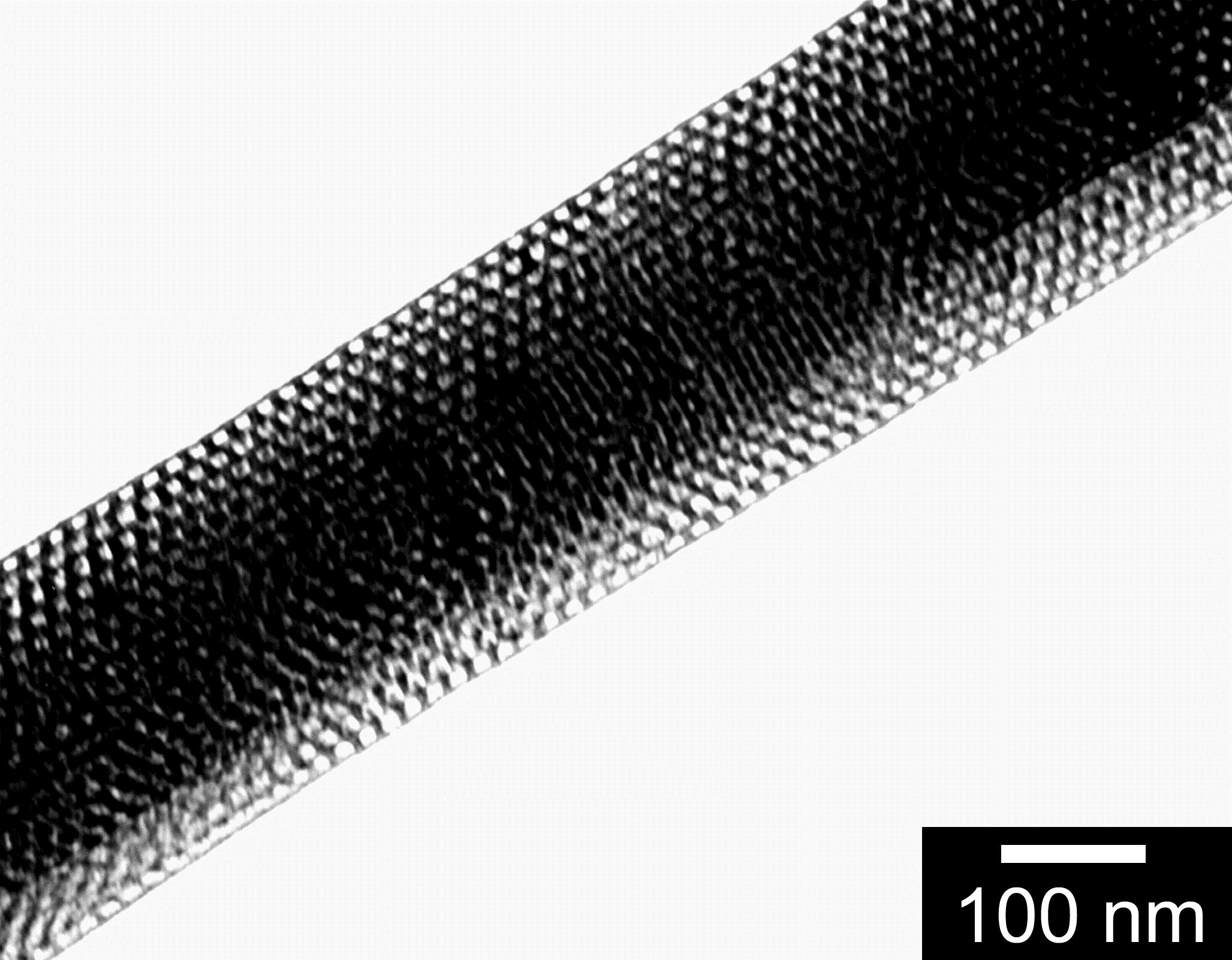
Figure 6. a) TEM image of the mesoporous silica tube; (b) mesoporous nanorods and their arrays
5. Other Research Interests
We developed the method of rapid preparation of highly-crosslinked polymeric nanofibers. The nanostructures, dimensions, composition and functionalities are tunable. These nanofibers are highly efficient and universal solvent gelation motivator. They can be used for oil-water separation purpose, and have great potential on high efficient damping system and heat-isolation.
We developed pH sensitive dynamic chemical bonding structure which are suitable within tumor cell environment. We have prepared tumor-treatment reagents such as colloidal and injectable hydrogels, to enhance the selectivity of chemotherapy drugs delivery (Figure 7b).
Aiming at the local environment within brain stem where thrombus originates, we prepared polymer/protein nanocomposite treatment system based on urokinase. Such system was applied together with super sonication to conduct thrombolytic therapy. The results showed higher uptake efficiency and could lower the occurrence of post-thrombolytichemorrhage.
a) 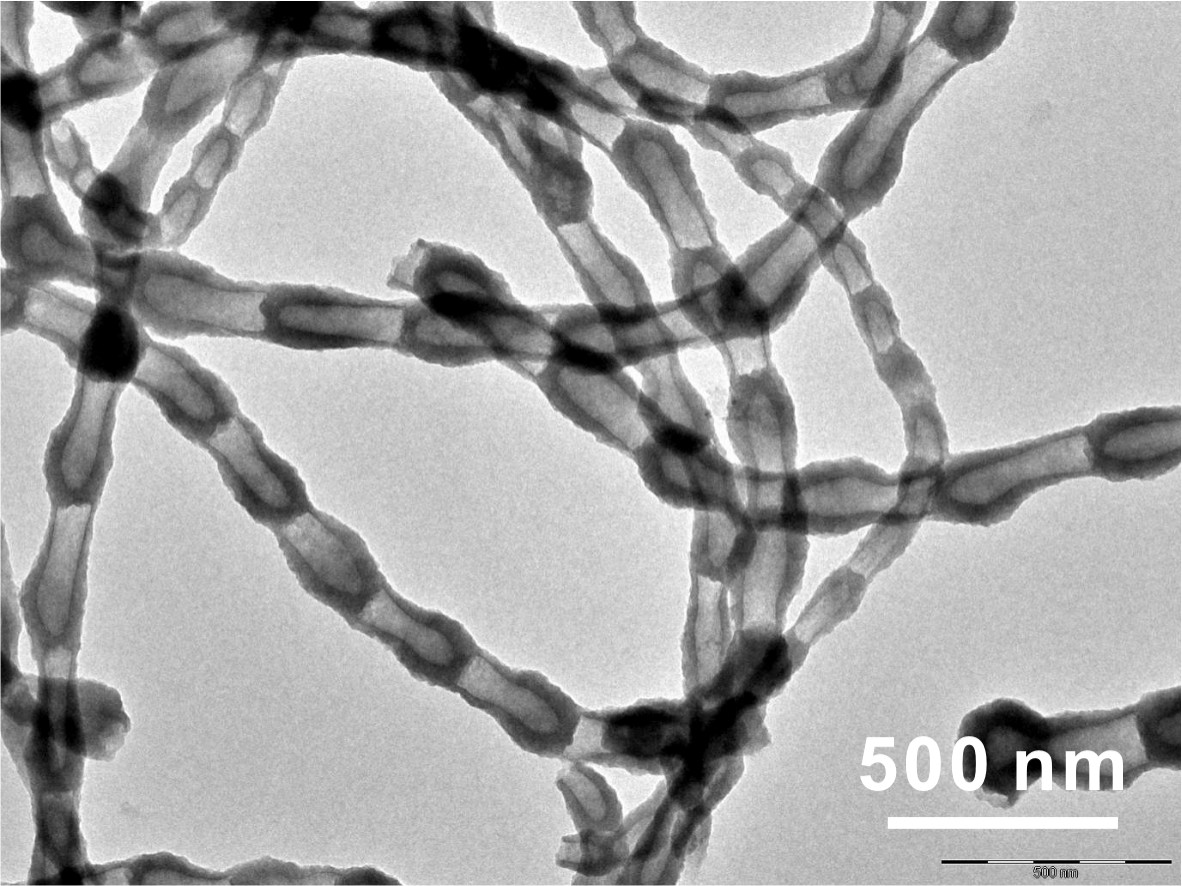
Figure 7. a) Polymeric nanofibers;b) Extracellular responsive colloids for treatment of tumer cells.
